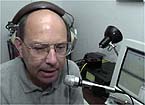
Jul 5,
2000 - 01:37 AM
Fewer
ham operators there for emergency
With modern, whiz-bang technology
like cellular phones and the Internet, it's hard to imagine the most surefire
communication during an emergency is something with roots going back to 1901.
In an emergency such as a major hurricane, telephone lines go down, taking away much of the Internet's usefulness. Cell phone towers can crash to the ground, and those that remain are clogged with callers.
Even radio systems that police and emergency officials use can be out of commission.
That is why emergency officials rely on ham or amateur radio operators.
``You don't know their real value until all other communication systems are down,'' said Michele Baker, the head of Pasco's emergency management. ``To have ham radio operators is very valuable.''
The amateur operators can relay information and messages when no other form of communication works.
Their value during emergencies is why the Federal Communications Commission created the Amateur Radio Service.
``In any kind of disaster or emergency situation the cellular system, if not taken out by weather conditions, will implode with the number of calls,'' said Paul Toth, a ham radio operator in Seminole.
If there were enough volunteer ham operators, one would be at every hurricane shelter, said Nance Shapira, a spokeswoman for Hillsborough County's emergency management.
But that is the problem.
The number of amateur radio operators seems to be dwindling. Many are aging, and younger replacements aren't filling the ranks.
The shortage hasn't hampered emergency operators around Tampa Bay because there hasn't been a major evacuation for years.
But it was brought home last year when Hurricane Floyd threatened South Florida. A volunteer group of area ham operators that normally staffs storm shelters didn't have enough people to go around.
There have been times when there weren't enough operators for every location they were needed in Pasco, Baker said.
Membership in the American Radio Relay League, the umbrella amateur radio association that coordinates testing for FCC licenses and represents the hobby, has leveled off to about 160,000, said Jennifer Hagy, a spokeswoman for the organization.
It reached a peak of 175,000 in 1997 and dropped to 152,000 at the end of last year.
One theory is the explosion of the Internet, which can provide the same instant communication a ham radio does.
But Hagy said she believes it's competition from other diversions.
``Probably more so than in the past, people are involved in so many activities,'' she said.
Toth, an assistant director of the ARRL for the Southeast, said the organization locally is trying to reverse the shrinking number of hams.
``While we do have an aging group of hams, we are working diligently to bring younger members into the fold,'' he said.
His organization is working with 4-H and Scouting groups to introduce the hobby to youngsters.
And it's not your father's ham radio anymore.
Hams can now send digital images over the radio to be picked up by computers. They can also combine global positioning satellite technology and digital mapping.
That can allow officials at an emergency center to know the exact location of the image being transmitted.
The technology can be useful for search and rescue as well as damage assessment, Toth said.
Even with shrinking numbers, Toth said volunteers can fill the Tampa Bay area's needs in an emergency.
``I think enough operators can be found,'' Toth said. ``The numbers are certainly there. It's just a question of recruitment.''
Neil Johnson can be reached at (352) 544-5214 and njohnson@tampatrib.com